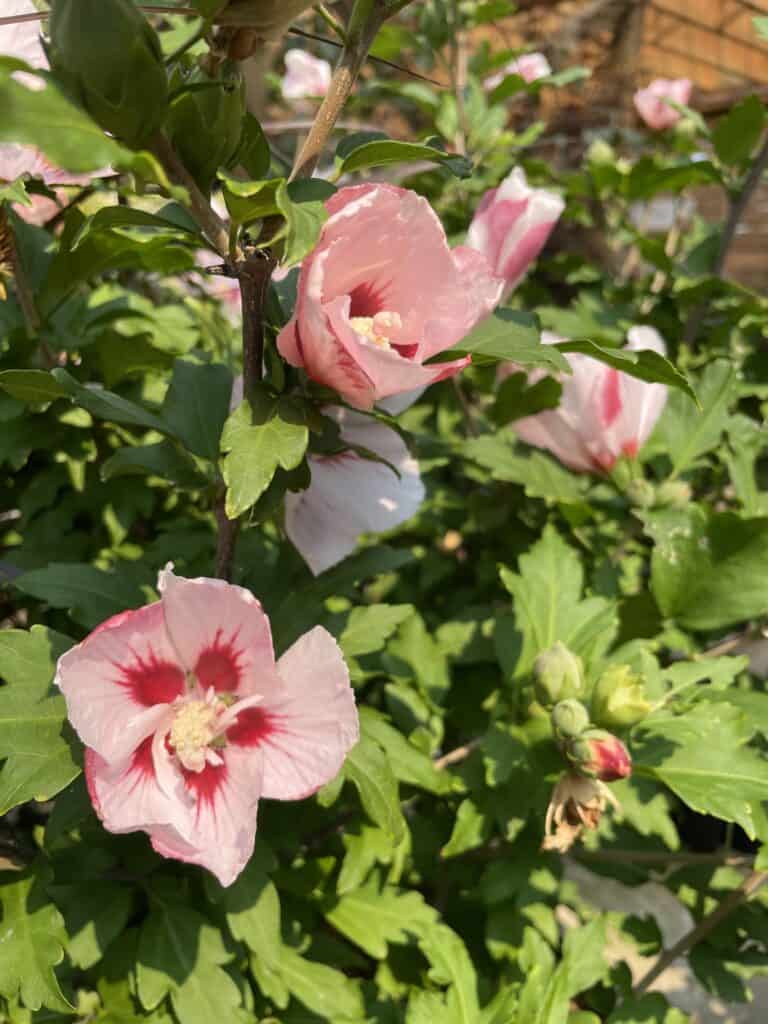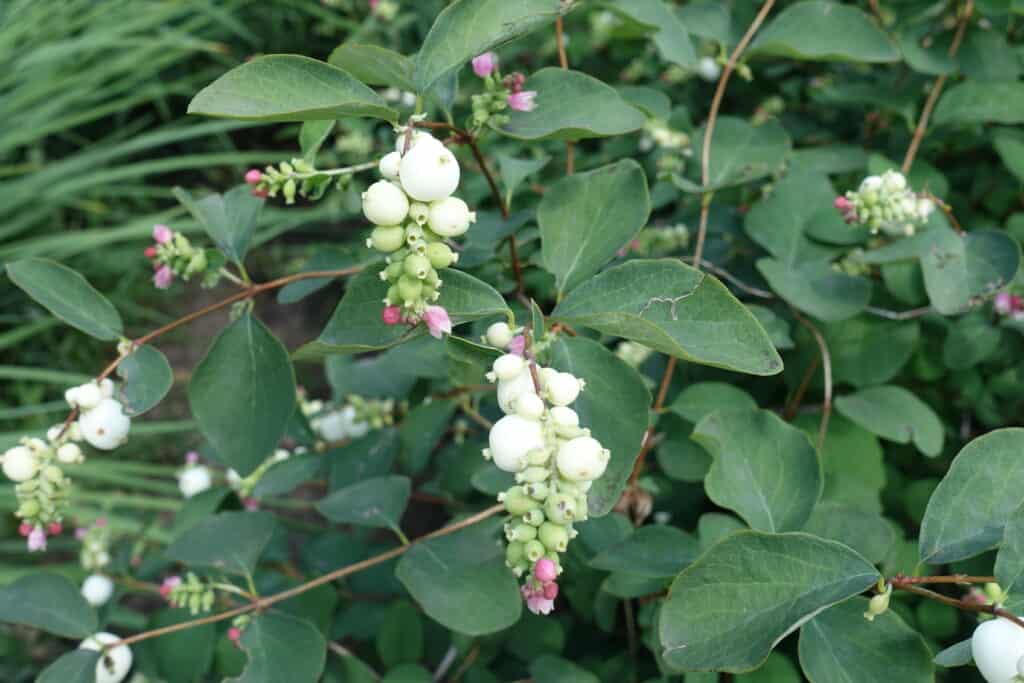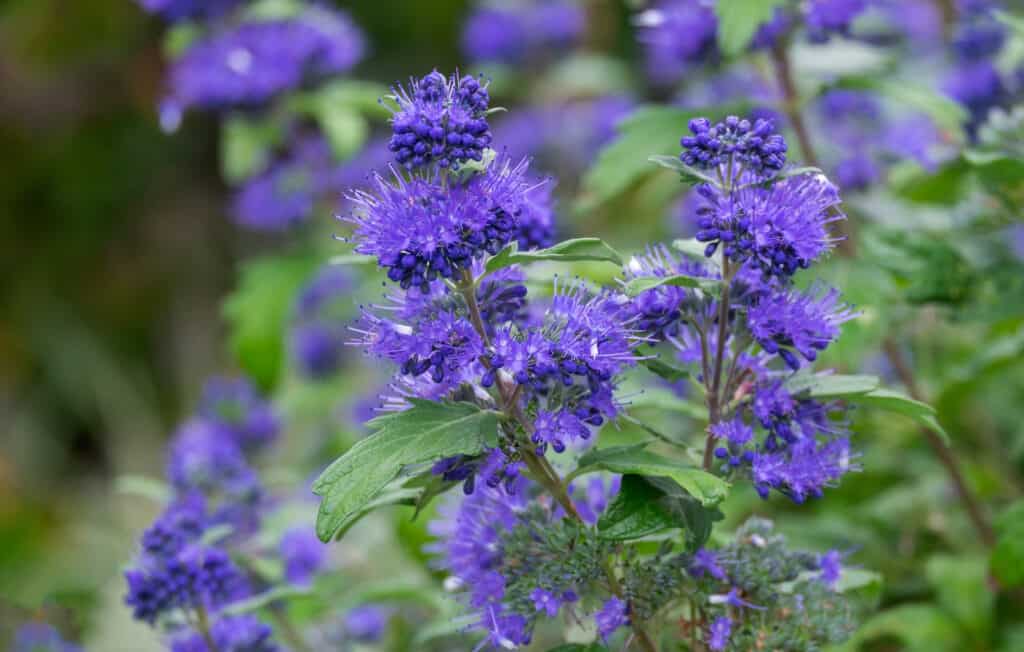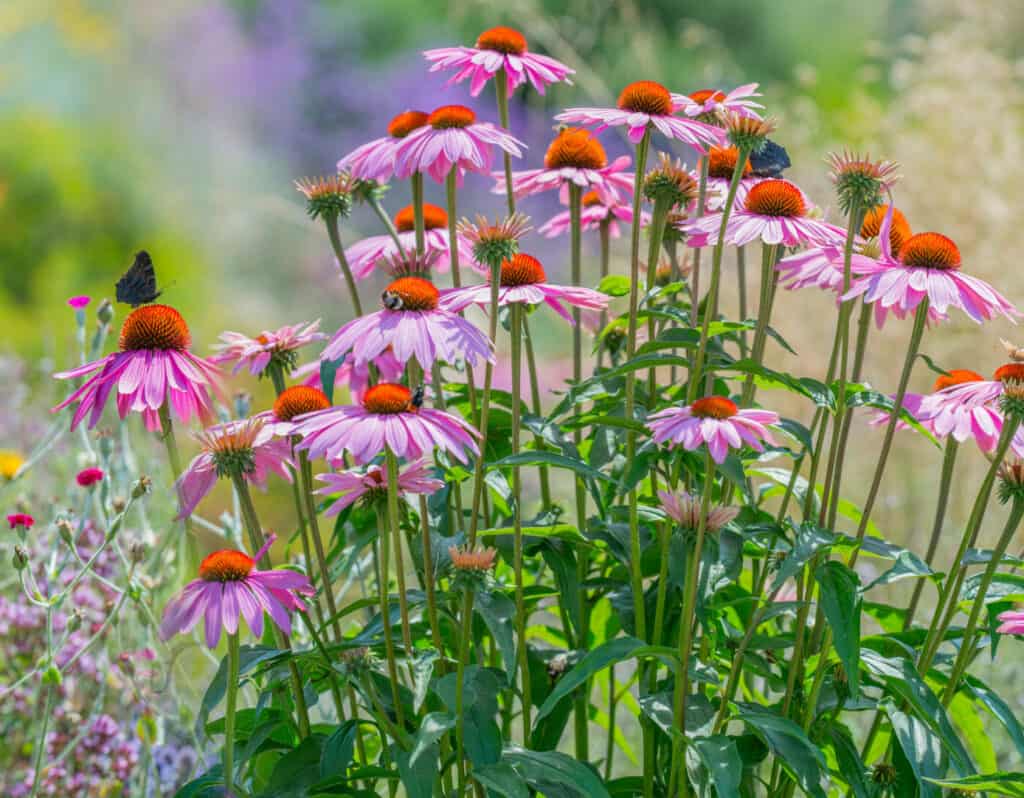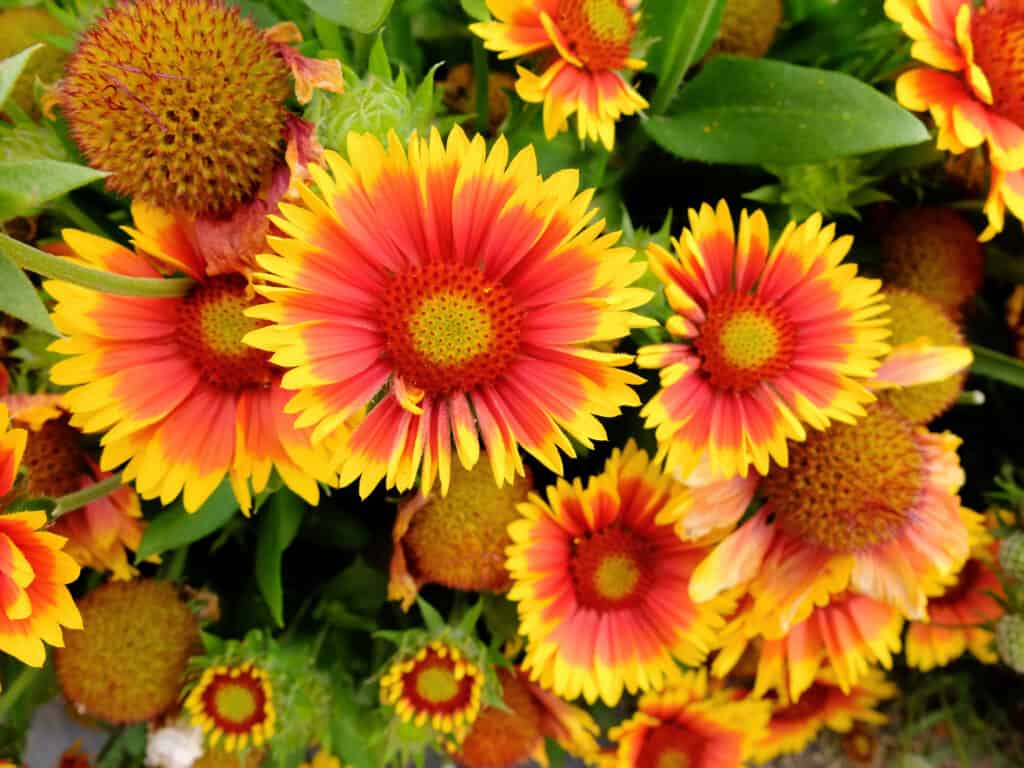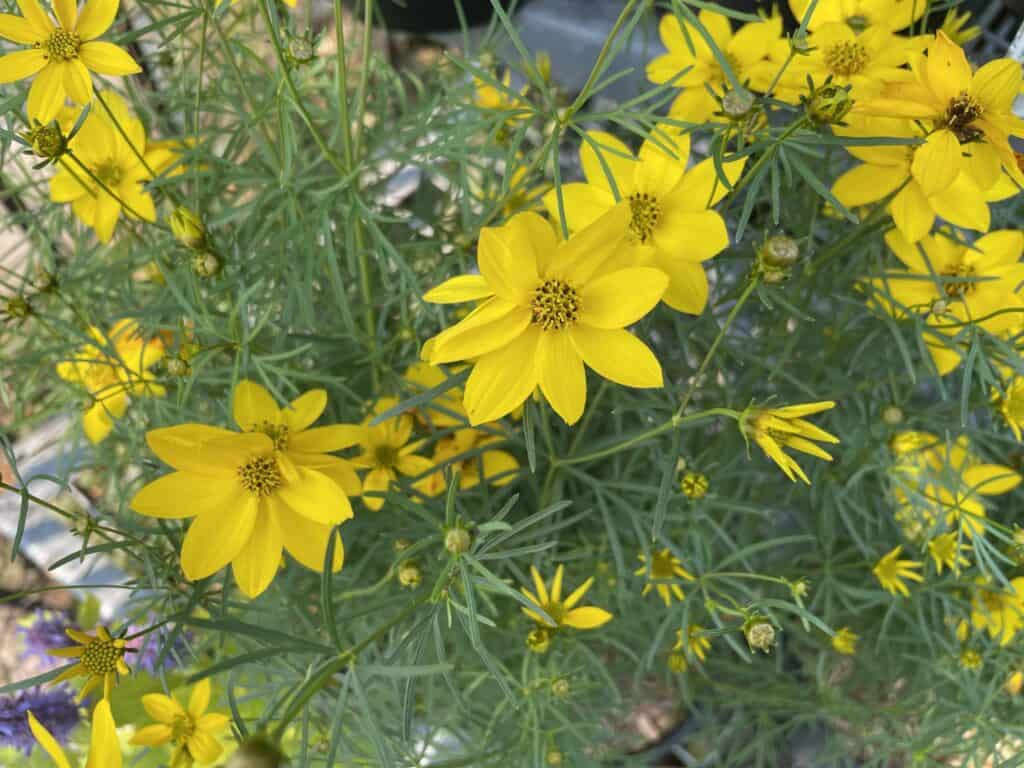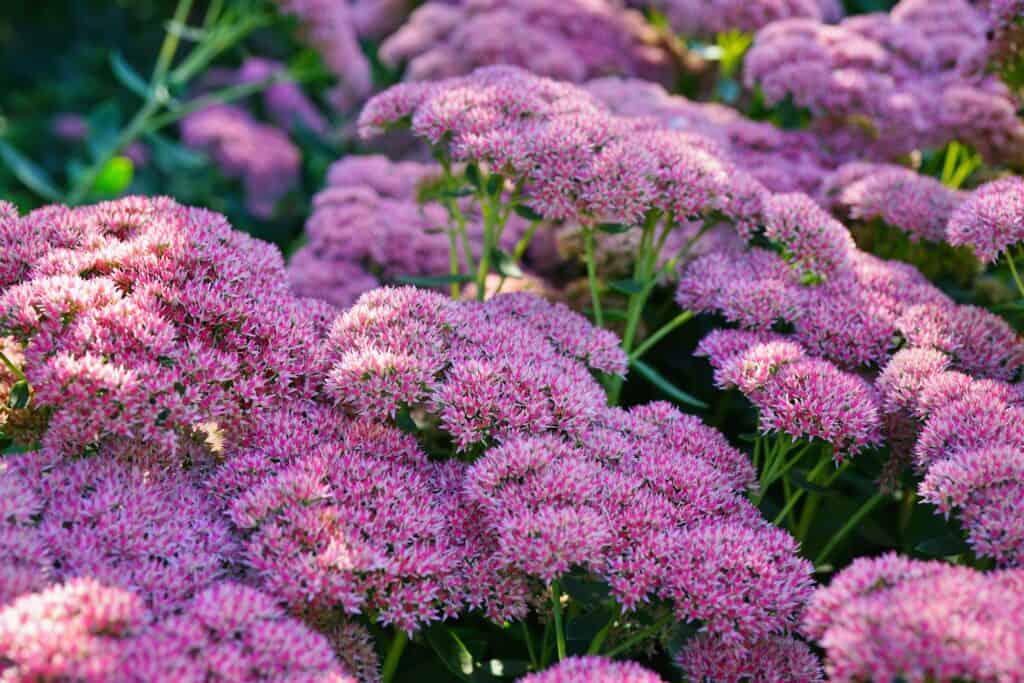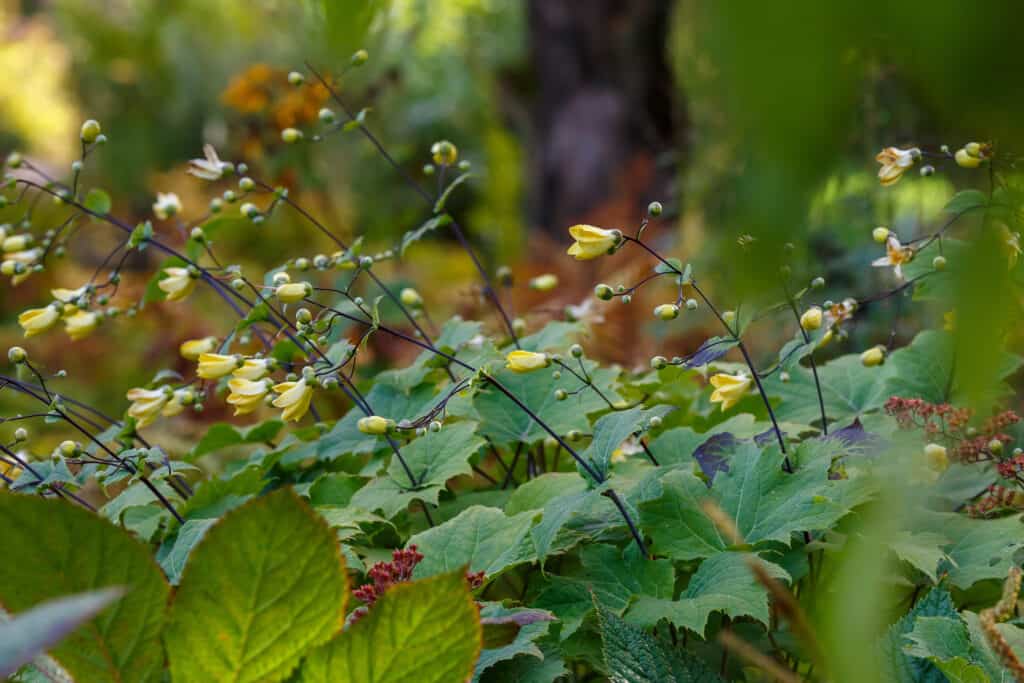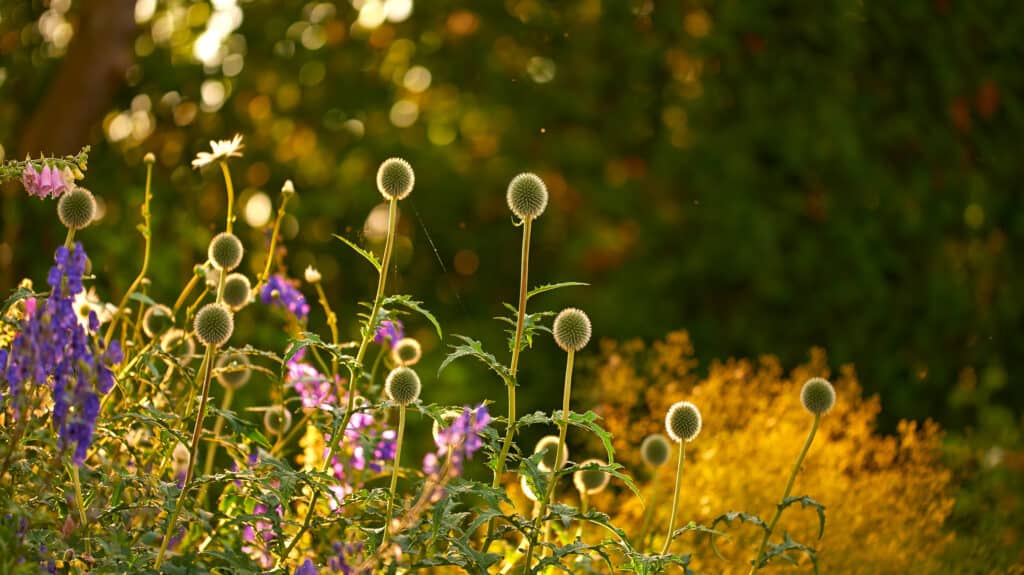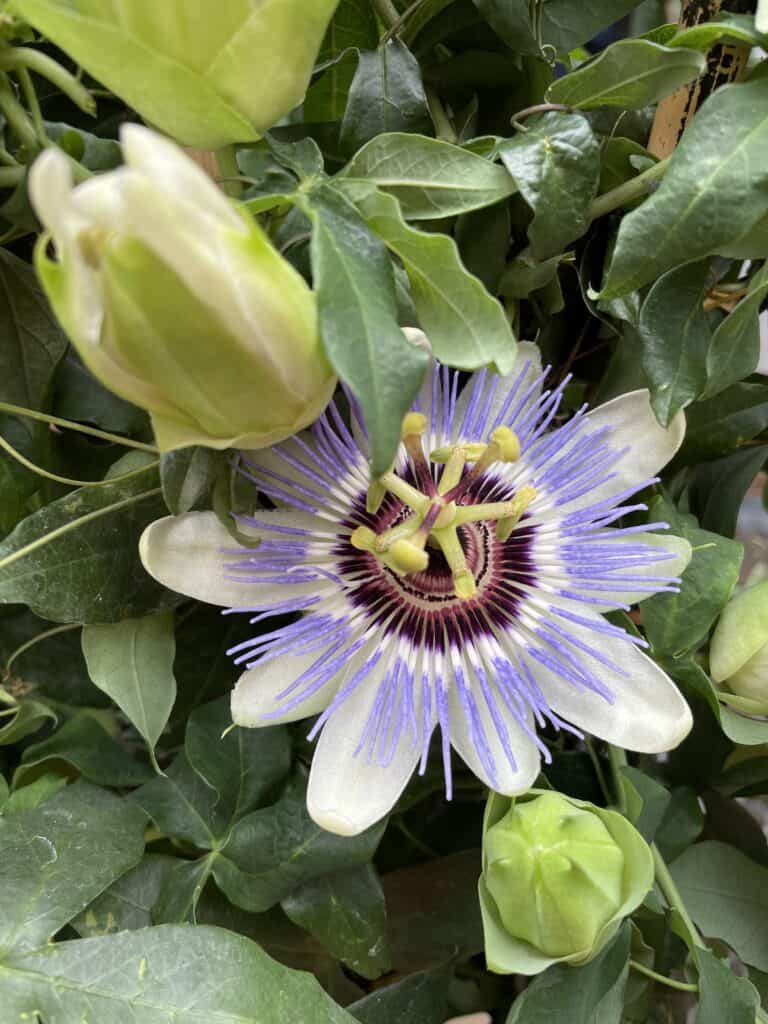Shop Mother’s Day Bouquets
Figaro's Blog
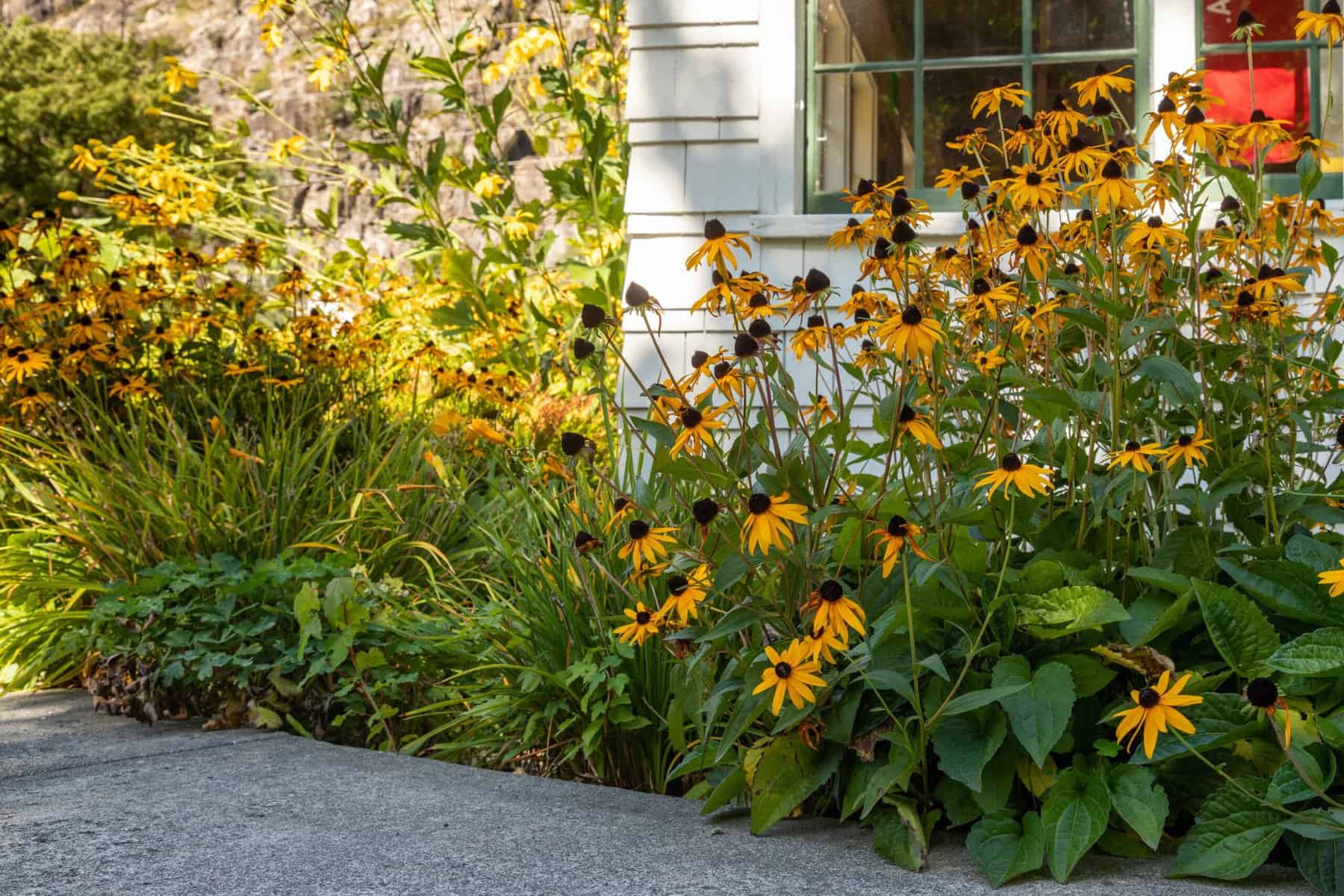
In spring, foliage is lush and unblemished, growth is abundant, and everything seems to be bursting into bloom. At some point in the summer, though, perennial gardens can start to look a little…flat (and not because you haven’t kept up with staking!). In this blog post, we’ll share some suggestions for beating those late-summer garden blues with late-blooming shrubs and perennials that will have you falling in love with your garden all over again.
What Late-Blooming Shrubs and Perennials Can Do For Your Garden
Roughly seventy-five percent of perennials and nearly half of flowering shrubs bloom March through June. So unless you’ve incorporated late-blooming shrubs and perennials (or taken a foliage-first approach to design), your beds and borders can look a little barren for the rest of the year. (And if that’s how they look to you, imagine how the pollinators feel!)
While flowers aren’t the only thing that can add life to a landscape, they can go a long way to provide colour, interest and visual appeal. Some, too, will offer fragrance and support pollinators.
Some Favourite Late-Blooming Shrubs and Perennials
There are so many incredible late-blooming shrubs and perennials (not to mention grasses, vines, and even trees), but we’ve listed some of our favourites here.
Late-blooming Shrubs
While the bulk of perennials flower in spring, approximately 45% of shrubs flower in late summer and fall. Remember: shrubs are woody plants characterized by multiple stems arising from the base. Generally smaller in size compared to trees, shrubs can vary in height, from a few inches to several feet. Shrubs are an essential part of landscape and garden design, providing year-round structure and offering diverse foliage, flowers, and sometimes fruits. Some of our favourite fall-blooming shrubs include:
Rose of Sharon (Hibiscus syriacus)
Deceptively hardy, hibiscus has a tropical vibe that can extend that summer feeling right through fall. Commonly known as Rose of Sharon, this deciduous shrub is renowned for its stunning, trumpet-shaped flowers that bloom from summer to fall. Coming in a range of colours, from soft pastels to vibrant hues, hibiscus’s graceful beauty and ability to attract pollinators make it a cherished choice for gardens and landscapes.
Snowberry (Symphoricarpos albus)
Snowberry (Symphoricarpos albus) is a fall garden gem. A BC native, this deciduous late-blooming shrub boasts clusters of small white berries that persist well into the autumn months. Against the backdrop of changing leaves, snowberries create a captivating contrast, providing texture and colour even after the summer blooms have faded. Their long-lasting display makes them a cherished addition to fall landscapes and woodland gardens.
Hydrangea (Hydrangea spp.)
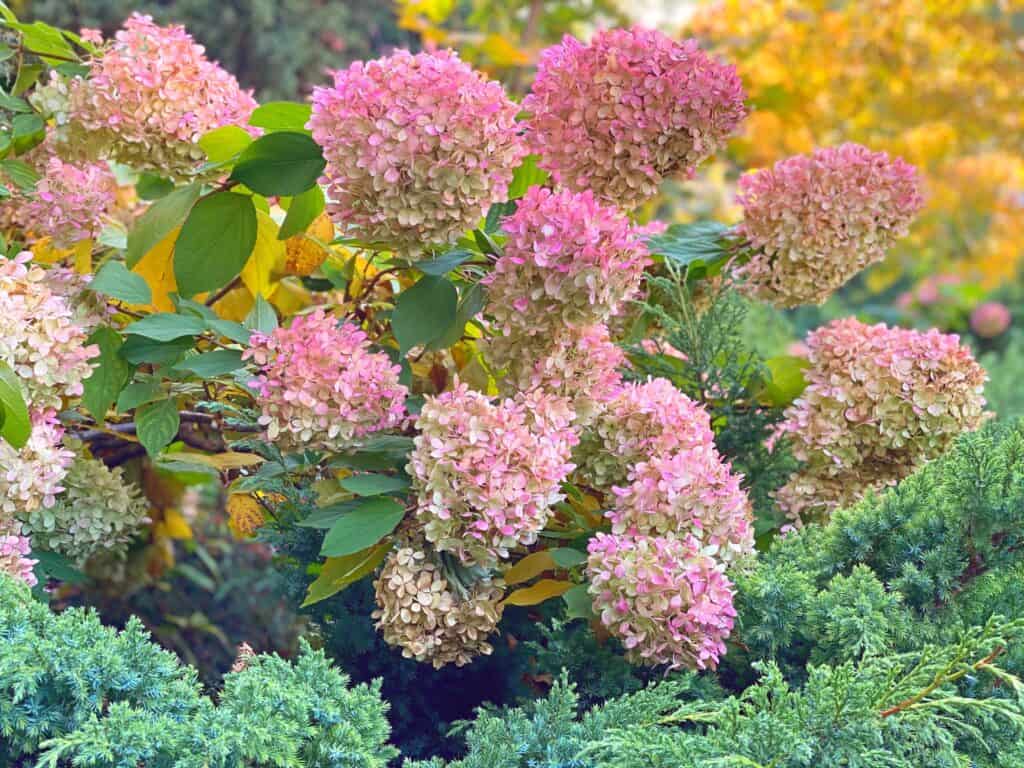
Hydrangea paniculata ‘Pink Lady’ produces cone-shaped panicles of elegant white flowers which become flushed with pink by the end of the season.
Though hydrangeas begin their bloom period in early summer, nearly all retain their blooms much later, and the fading blooms offer another point of interest as they change colour. Late-blooming varieties such as H. paniculata ‘Bobo,’ ‘Pinky Winky’ and ‘Pink Lady’ or H. macrophylla ‘Let’s Dance Sky View™’ can introduce those white, pink, and blue tones that are hard to find in end-of-season blooms.
Caryopteris (Caryopteris x clandonensis)
A deciduous mounding subshrub for full sun, Caryopteris is commonly known as Bluebeard or Blue Mist Shrub. Cherished for its vivid blue to violet flowers that grace gardens in late summer through fall, Caryopteris is also favoured for its compact size and aromatic foliage. Drought-tolerant and loved by pollinators, it’s a versatile choice for both garden beds and containers.
Late-blooming Perennials (Plus Vines and Biennals!)
The late-summer garden plays host to many popular flowering perennials. Without them, the fall garden can feel colourless. Be sure to incorporate one or more of the following: doing so will provide not only a feast for the pollinators, but also for your eyes.
Coneflower (Echinacea spp.)
Coneflower, or Echinacea, is a resilient perennial prized for its striking daisy-like blooms, drought tolerance, and insect appeal. Flower colour ranges from creamy white and sunny yellow to deep red and vibrant purple depending on varietal. All boast coneflower’s distinctive raised centre. Thriving in sunny gardens, this medicinal herb attracts pollinators and adds a pop of colour from early to late summer. Leave faded blooms to stand in the garden for the birds to feast on come winter.
Black-Eyed Susan (Rudbeckia spp.)
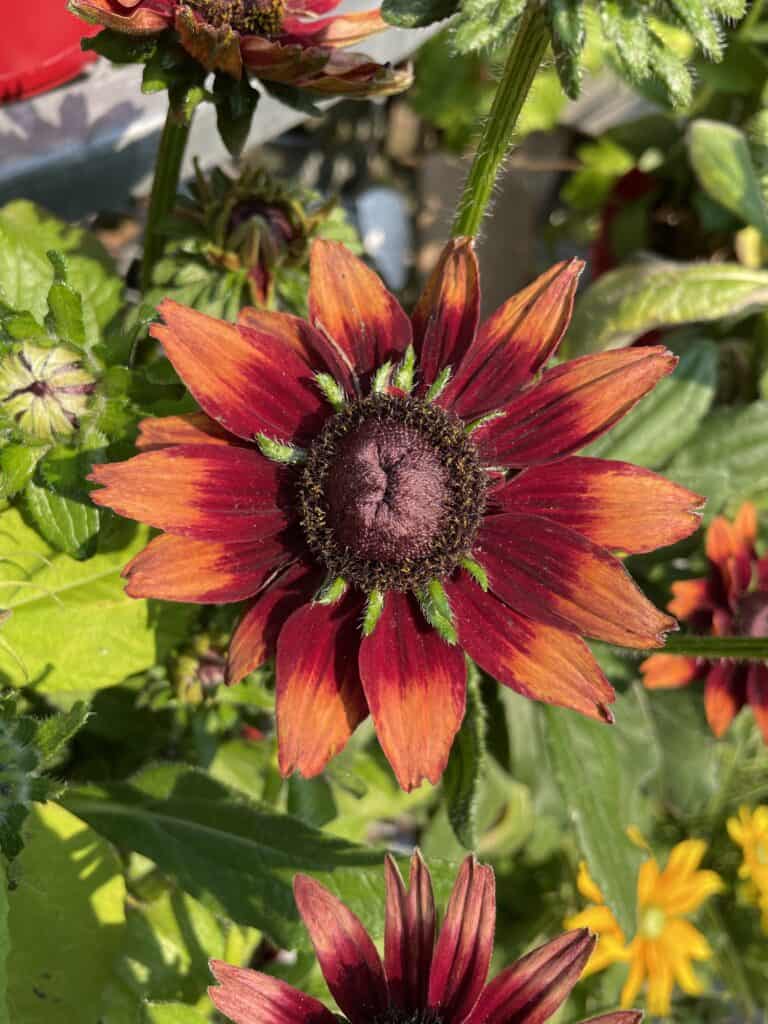
Noted for its unique colouring, Rudbeckia hirta ‘Cherry Brandy’ is a biennial with stunning, large, rusty red flowers.
The most commonly known Rudbeckia is the classic gold-petaled, black-centred North American native Rudbeckia hirta, But Rudbeckias have branched out. We love the deep russet tones of ‘Cherry Brandy’ and the sunny yellow-on-green faces of ‘Prairie Sun.’ All rudbeckias have daisy-like flowers that provide a blaze of colour in the late summer garden. Biennial varieties such as R. hirta often self-sow, so pot up the babies and share with a neighbour if your clump gets out of hand. Rudbeckia is generally low maintenance and a source of nectar for pollinators.
Sneezeweed (Helenium spp.)
Helenium, commonly known as Sneezeweed, is a sun-loving perennial that provides a burst of late colour. Its daisy-like flowers, ranging in shades from deep reds to warm oranges and yellows, bring a cheerful charm to gardens and attract butterflies. With its tall, upright growth and low-maintenance nature, Helenium adds a vibrant touch to borders, meadows, and cottage-style landscapes. Gaillardia ‘Arizona Sun’ is a good substitution.
Tickseed (Coreopsis)
Coreopsis, often called Tickseed, has cheerful daisy-like blooms in shades of yellow, orange, or pink. Blooming from early summer to fall, this low-maintenance perennial thrives in various soils and attracts pollinators, making it a perfect addition to borders, rock gardens, and wildflower patches. Its enduring charm and easy care make Coreopsis a garden favourite.
Stonecrop (Sedum spp.)
Sedums, commonly called Stonecrop, are resilient succulents prized for their easy elegance. With fleshy leaves and clusters of star-shaped flowers, they offer a spectrum of colours from vivid greens to deep reds, often deepening in autumn. These versatile plants thrive in various conditions, from rock gardens to hanging pots, and bring texture and visual interest to gardens year-round. Sedum ‘Autumn Joy’ is the best-known late-blooming variety, but also look for ‘Autumn Fire’ and others.
Yellow Wax Bells (Kirengeshoma palmata)
Kirengeshoma palmata, or yellow wax bells, is a shade-loving herbaceous perennial with a shrub-like habit. It is one of very few perennials blooming from late summer to fall. Hardy in zones 4-8, this elegant plant received the Royal Horticulture Society’s Award of Garden Merit in 1993. Reaching 3-4.5′ tall, it is grown as much for its bold foliage as its pale yellow flowers flowers.
Globe Thistle (Echinops sphaerocephalus)
Its flowers are distinctively un-flower-like, but there’s no denying Echinops’ presence in the garden. Spiky round globes appear above serrated leaves in late summer, giving the plant its common name, Globe Thistle. Drought tolerant, sun loving, and adaptable to diverse conditions, Echinops also creates an eye-catching display in both formal beds and wildflower meadows.
Blue Passionflower (Passiflora caerulea)
With its exotic look, the Passionflower vine is a semi-evergreen perennial climber. With intricate, show-stopping flowers displaying a range of colours, these vines often bear edible (if not tasty) fruits. Blooming from July through September, they also attract pollinators and look lovely grown up trellises or over arbours.
Embracing the Changing Seasons
As the weather begins to shift, these late-blooming shrubs and perennials remind us that change can be beautiful. They help ease what can sometimes be a melancholy transition toward the colder months, and can also echo and amplify the colours we see reflected in the changing leaves. Adding late-blooming shrubs and perennials to your garden is just one way to beat those common late-summer garden blues. Next week, we’ll talk grasses, seed heads, and foliage!
plants make everything better
Whether you're an experienced horticulturist, or looking for your first plant, our team at Figaro's Garden is excited to help you realize your plant and garden dreams. Contact us today or stop by the shop to see what's in-store.

